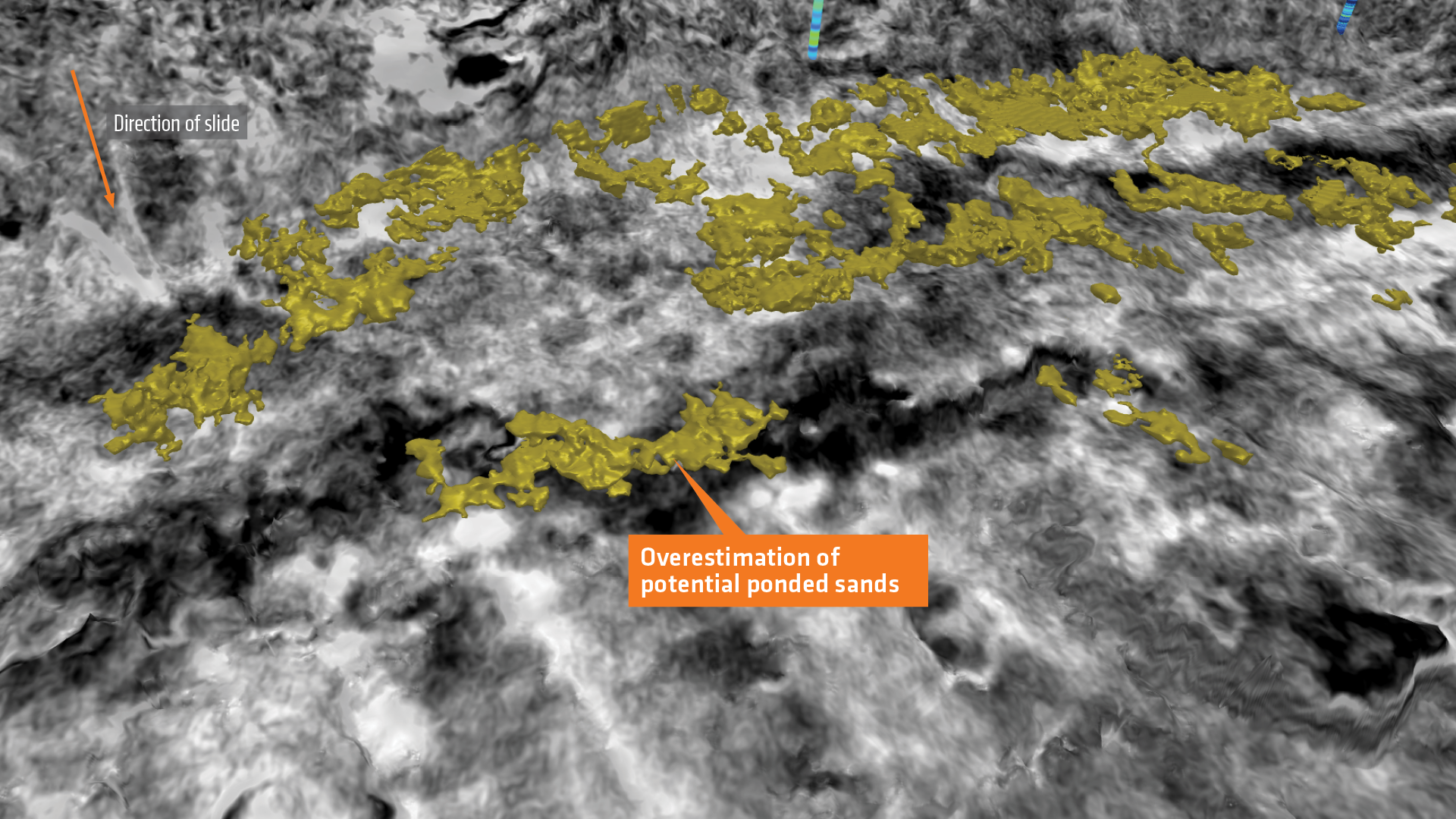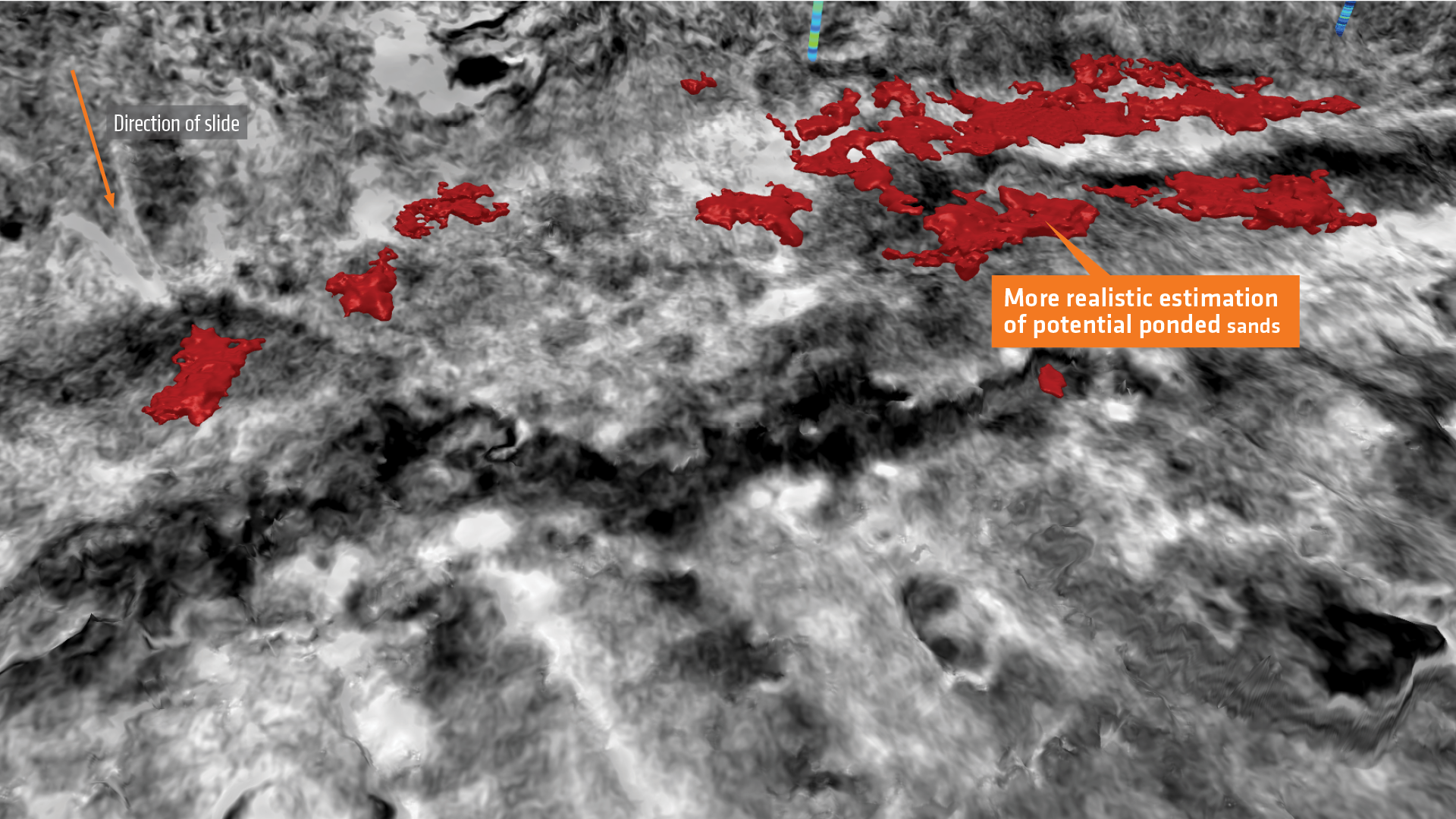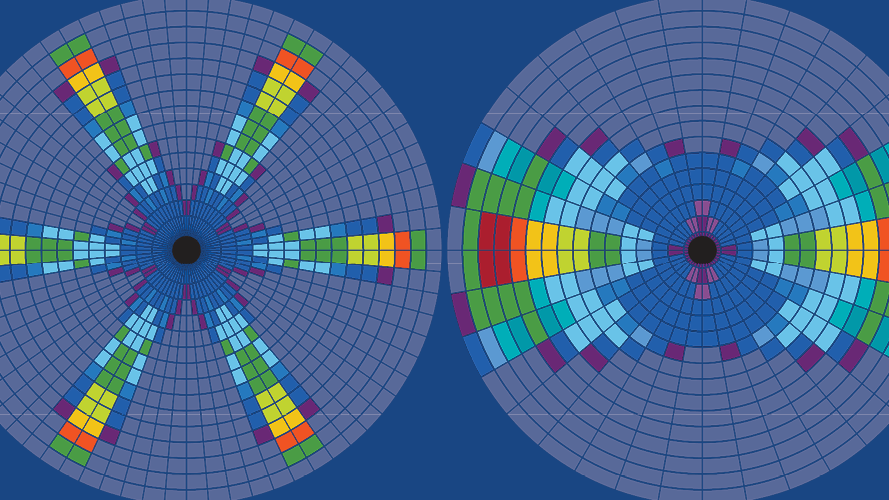Richer Azimuth Geometries
The acquisition of additional azimuths should be tailored to the complexity of the subsurface seismic imaging challenges. Used to boost target illumination, lateral resolution, or improve coherent noise attenuation.
MAZ Acquisition with GeoStreamer X
MAZ acquisition can enhance subsurface illumination improving reservoir characterization in various clastic and carbonate environments unaffected by complex salt challenges. MAZ benefits may be achieved by acquiring one or more additional new azimuth to high-grade existing narrow-azimuth legacy data. A MAZ survey is created in processing by combining the data. One vessel solutions are cost-effective and have low carbon emissions.
GeoStreamer X surveys use MAZ shooting templates to enhance subsurface illumination and may use long streamer tails to efficiently acquire longer offsets for Full Waveform Inversion velocity model building.
- Narrow azimuth (NAZ): One vessel towing an array of streamers and source(s)
- Multi-azimuth (MAZ): Two or more coincident surveys with different survey azimuths combined in processing
- Wide-azimuth (WAZ): Two or more vessels used simultaneously to increase the range of azimuths and offsets available for each shot gather in processing
- Rich-azimuth (RAZ): A rich-azimuth seismic dataset formed by combining multiple wide-azimuth surveys
Enhancing Subsurface Imaging in Complex Geological Environments
WAZ and RAZ surveys may be beneficial for removing coherent imaging noise in salt and other complex geological environments. WAZ and RAZ surveys may include extended long offset strategies to efficiently improve offset coverage. The hybrid deployment of OBN receivers in addition to towed-streamer acquisition may provide complementary data that has richer offset-azimuth coverage to enhance FWI velocity model building and subsurface characterization. OBN data may also be used for converted wave acquisition and PP-PS surface imaging and characterization.
Acquiring two or more survey azimuths will mainly boost target illumination and lateral resolution, while wide-azimuth data acquired with two or more vessels sailing on parallel lines, will improve coherent noise attenuation, which is useful in complex geological regimes such as salt provinces, where extended long-offset (ELO) strategies may also be employed.
Rich-azimuth acquisition uses wide-azimuth multi-vessel configurations on a multi-azimuth shooting template to deliver the ultimate combination of improved target illumination and coherent noise attenuation. This is reserved for the most challenging scenarios. When rich-azimuth towed-streamer survey designs are unable to address the subsurface imaging challenges on an exploration survey, it is possible to complement the offset-azimuth coverage using sparse ocean-bottom nodes (hybrid streamer-OBN acquisition). The converted wave data acquired by the nodes (PP-PS) may also benefit the prediction of elastic reservoir properties. Standalone OBN acquisition with dense node spacing is typically only pursued at a reservoir scale, because of cost.


Multi-Azimuth Subsurface Characterization
A GeoStreamer X example from the South Viking Graben demonstrates how high-density MAZ acquisition with long streamer tails (10 km) and wide-tow triple-source shooting (225 m outer source separation) yielded enhanced shallow imaging resolution, deep FWI velocity model building, and enabled a robust multi-azimuth inversion of pre-stack amplitude versus angle (AVA) information. The below figure illustrates how MAZ subsurface characterization can significantly reduce ambiguity in the spatial delineation of reservoir properties.
Comparison: Estimation of porosity and geobody extraction. The legacy narrow azimuth dataset porosity estimation (left) is noisier and less coherent compared to the newly acquired and processed GeoStreamer X multi-azimuth dataset (right). Using the NAZ data could potentially lead to an overestimation of the volume of porous sands and disappointing drilling results.
Speak to a Specialist
Interested in a product demo or trial? Let us know your needs and we’ll connect you to the right person or team.
Book a Data Viewing
Want to see the latest seismic data solutions and imaging technologies in your region of interest or for the next license round? Book a data viewing with one of our experts.
Discuss Your Seismic Data Needs
Every need is different and we'd like the opportunity to discuss yours further. Speak to one of our data or geoscience experts to customize seismic solutions specific to your requirements.


